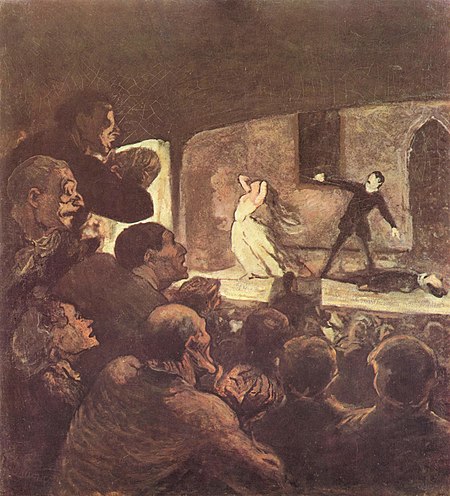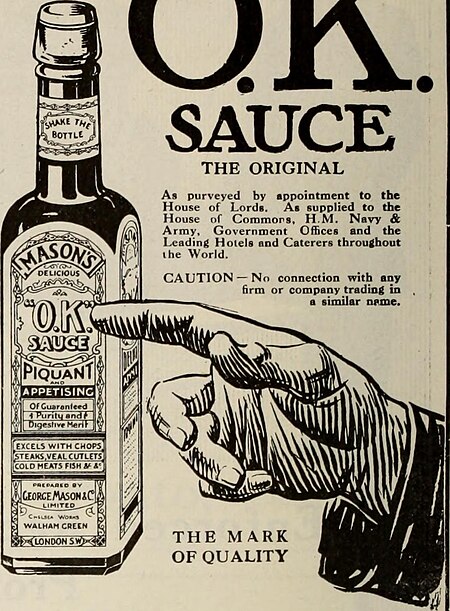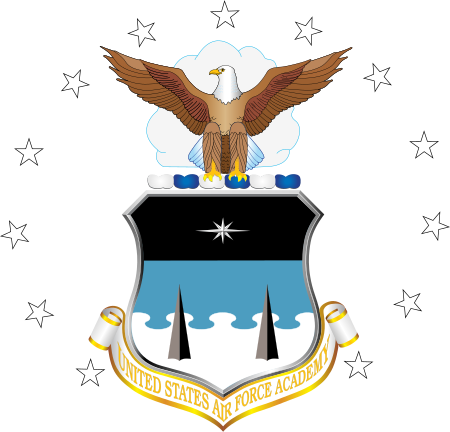Merchant bank
|
Read other articles:

Disambiguazione – Se stai cercando altri significati, vedi Melodramma (disambigua). L’Effetto del melodramma (1830), di Louis-Léopold Boilly. Melodramma, dipinto da Honoré Daumier. L'opera rappresenta una tipica scena parigina come se si svolgesse al viale dei Templari. Il melodramma (dal greco antico μέλος?, mélos, canto o musica e δρᾶμα, drâma, azione scenica o recitazione) è il testo poetico destinato alla musica, soprattutto nei casi in cui tale testo abbia importanz…

Andalucia Tennis Experience 2010Singolare Sport Tennis Vincitore Flavia Pennetta Finalista Carla Suárez Navarro Punteggio 6–2, 4–6, 6–3 Tornei Singolare Singolare Doppio Doppio 2009 2011 Voce principale: Andalucia Tennis Experience 2010. Il singolare dell'Andalucia Tennis Experience 2010 è stato un torneo di tennis facente parte del WTA Tour 2010. Jelena Janković era la detentrice del titolo, ma quest'anno non ha partecipato. Flavia Pennetta ha battuto in finale Carla Suárez Nav…

Painting by Francisco de Goya The DogArtistFrancisco de GoyaYearcirca 1819–1823TypeOil mural on plaster transferred to canvasDimensions131.5 cm × 79.3 cm (51+3⁄4 in × 31+1⁄4 in)LocationMuseo del Prado, Madrid The Dog (Spanish: El Perro) is the name usually given to a painting by Spanish artist Francisco de Goya, now in the Museo del Prado, Madrid. It shows the head of a dog gazing upwards. The dog itself is almost lost in the vastness of …

Square and parade ground in London Trooping the Colour at Horse Guards Parade in 1956 Horse Guards Parade is a large parade ground off Whitehall in central London (at grid reference TQ299800). It is the site of the annual ceremonies of Trooping the Colour, which commemorates the monarch's official birthday, and the Beating Retreat. History The Coldstream Guards on Parade at Horse Guards, by John Chapman, c. 1755 Horse Guards Parade was formerly the site of the Palace of Whitehall's tiltyar…

This article is about the Redcliffe peninsula. For the suburb, see Redcliffe, Queensland. For the former local government area, see City of Redcliffe. For other uses, see Redcliffe (disambiguation). Town in Queensland, AustraliaRedcliffe PeninsulaQueenslandWoody Point jetty and Moreton Bay at Woody PointPopulation59,469 (2016 census)[1] • Density2,523/km2 (6,530/sq mi)Established1824Area38.1 km2 (14.7 sq mi)Time zoneAEST (UTC+10)Location23 km (14…

Brand of brown sauce This article needs additional citations for verification. Please help improve this article by adding citations to reliable sources. Unsourced material may be challenged and removed.Find sources: OK Sauce – news · newspapers · books · scholar · JSTOR (November 2015) (Learn how and when to remove this message) A bottle of O.K. Sauce from 1913 OK Sauce is a brand of brown sauce manufactured in the United Kingdom, first by George Mason &a…

Women's national water polo team representing Spain SpainFINA codeESPAssociationRoyal Spanish Swimming FederationConfederationLEN (Europe)Head coachMiki OcaAsst coachÁngel AndreoJordi VallsCaptainPili PeñaOlympic Games (team statistics)Appearances4 (first in 2012)Best result (2012, 2020)World ChampionshipAppearances13 (first in 1998)Best result (2013)World CupAppearances3 (first in 2014)Best result (2014, 2023)World LeagueAppearances16 (first in 2005)Best result (2022)European Championshi…

Acquarica del Capoex comune Acquarica del Capo – Veduta LocalizzazioneStato Italia Regione Puglia Provincia Lecce AmministrazioneSindacoFrancesco Ferraro (lista civica Cittadini Protagonisti) dal 7-6-2009 Data di soppressione14-5-2019 TerritorioCoordinate39°54′46″N 18°14′46″E / 39.912778°N 18.246111°E39.912778; 18.246111 (Acquarica del Capo)Coordinate: 39°54′46″N 18°14′46″E / 39.912778°N 18.246111°E39.9127…

Disambiguazione – Se stai cercando altri significati, vedi Asiago (disambigua). Asiagocomune Asiago – VedutaVeduta LocalizzazioneStato Italia Regione Veneto Provincia Vicenza AmministrazioneSindacoRoberto Rigoni Stern (lista civica) dal 26-5-2014 TerritorioCoordinate45°52′N 11°31′E / 45.866667°N 11.516667°E45.866667; 11.516667 (Asiago)Coordinate: 45°52′N 11°31′E / 45.866667°N 11.516667°E45.866667; 11.516667 (Asiag…

此條目可参照英語維基百科相應條目来扩充。 (2021年5月6日)若您熟悉来源语言和主题,请协助参考外语维基百科扩充条目。请勿直接提交机械翻译,也不要翻译不可靠、低品质内容。依版权协议,译文需在编辑摘要注明来源,或于讨论页顶部标记{{Translated page}}标签。 约翰斯顿环礁Kalama Atoll 美國本土外小島嶼 Johnston Atoll 旗幟颂歌:《星條旗》The Star-Spangled Banner約翰斯頓環礁地�…

River in New York and Connecticut in the United States of America 41°02′20″N 73°35′24″W / 41.039°N 73.590°W / 41.039; -73.590 Mianus RiverLow dam upriver on Mianus River in Mianus River Park near Old Mill Lane in Stamford, Connecticut.Location of the mouth in ConnecticutLocationCountryUnited StatesStatesNew York and ConnecticutPhysical characteristicsSource • locationTown of North Castle, New York Mouth • locati…

Bronkhorstspruit CommandoBronkhorstspruit Commando emblemCountry South AfricaAllegiance Republic of South Africa Republic of South Africa Branch South African Army South African Army TypeInfantryRoleLight InfantrySizeOne BattalionPart ofSouth African Infantry CorpsArmy Territorial Reserve, Group 15Garrison/HQBronkhorstspruitMilitary unit Bronkhorstspruit Commando was a light infantry regiment of the South African Army. It formed part of the South African Army In…

Idolslogo IdolsPembuat Simon FullerPemeran Lebogang Mzwimbi Thato Matlhabaphiri Angela Angwenyi Trevor Siyandi Kawesa RichardNegara asal KenyaRilis asliJaringanM-NetRilis2008 –Finalis(dengan tanggal eliminasi) Eric MoyoPemenang Nicolette Kiiga27 Juli Trinah Chisanga21 Juli Adiona Maboreke14 Juli Ammara Brown7 Juli Mkhululi Bhebhe30 Juni Cynthia Kuto23 Juni Samantha Tirivacho16 Juni Faycal Birinkuzila9 Juni Christine Adda2 Juni Idols East Africa adalah rangkaian kompetisi bernyanyi, I…

بطولة إفريقيا لكرة القدم للسيدات 2008 تفاصيل البطولة الدولة المستضيفة غينيا الاستوائية المنظم الاتحاد الإفريقي لكرة القدم التاريخ 2008 الفرق 16 (بداية من الدور التمهيدي) المراكز النهائية البطل غينيا الاستوائية الوصيف جنوب إفريقيا المركز الثالث نيجيريا ا…

Військово-музичне управління Збройних сил України Тип військове формуванняЗасновано 1992Країна Україна Емблема управління Військово-музичне управління Збройних сил України — структурний підрозділ Генерального штабу Збройних сил України призначений для плануван�…

Radio station in Colorado, United StatesKAFA-FMColorado Springs, ColoradoUnited StatesFrequency97.7 MHzBranding97.7 The AcademyProgrammingFormatRock, Alternative RockOwnershipOwnerUnited States Air Force AcademyHistoryFirst air dateJanuary 17, 1971 (1971-01-17)Former frequencies89.7 MHz104.5 MHz (1989–1993)104.3 MHz (1993–2006)Call sign meaningAir Force AcademyTechnical informationERP125 watts[1]HAAT30 feetTransmitter coordinates38°59′10″N 104°53′41″W…

Office in Rochester, New YorkLegacy TowerGeneral informationStatusCompletedTypeOfficeLocation1 Bausch and Lomb Place, Rochester, New YorkCoordinates43°9′17.2″N 77°36′21″W / 43.154778°N 77.60583°W / 43.154778; -77.60583Opening1995OwnerBuckingham Properties, Robert C. Morgan & Cos., and Flaum Management Co.[1]HeightAntenna spire401 ft (122 m)Technical detailsFloor count20Design and constructionArchitect(s)Fox & Fowle Architects, P.C.Web…

Cet article est une ébauche concernant un métier. Vous pouvez partager vos connaissances en l’améliorant (comment ?) en vous référant au projet métiers. Consultez la liste des tâches à accomplir en page de discussion. La fumisterie est le secteur d'activité professionnelle qui installe et répare les conduits de cheminée et effectue les travaux concourant à l'évacuation des fumées de la combustion. Les travailleurs de ce secteur sont appelés fumistes, car leur rôle consiste…

Masjid Kebudayaan Taipei台北文化清真寺AgamaAfiliasiIslam SunniLokasiLokasiZhongzheng, Taipei, TaiwanKoordinat25°1′9.80″N 121°31′40.62″E / 25.0193889°N 121.5279500°E / 25.0193889; 121.5279500Koordinat: 25°1′9.80″N 121°31′40.62″E / 25.0193889°N 121.5279500°E / 25.0193889; 121.5279500ArsitekturArsitekHuang Mo-chunTipeMasjidRampung1984 Masjid Kebudayaan Taipei (Bahasa Tionghoa: 臺北清真大寺; Hanyu Pinyin; Táiběi W…

Spanish Armed Forces Intelligence CenterCentro de Inteligencia de las Fuerzas ArmadasCoat of Arms of the CIFASActive2004–presentCountry SpainBranch Defence StaffTypeMilitary intelligence agencySizeClassifiedGarrison/HQRetamares Base, MadridWebsiteOfficial websiteCommandersCurrentcommanderDG Francisco Rosaleny Pardo de SantayanaMilitary unit The Armed Forces Intelligence Center (Spanish: Centro de Inteligencia de las Fuerzas Armadas, CIFAS) is a Spanish intelligence agency dependent of the…

